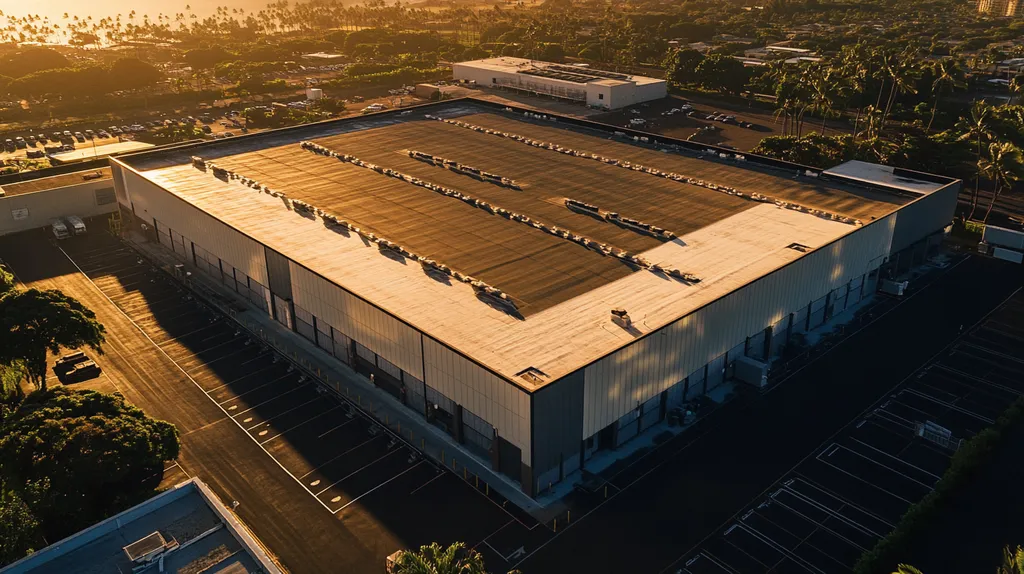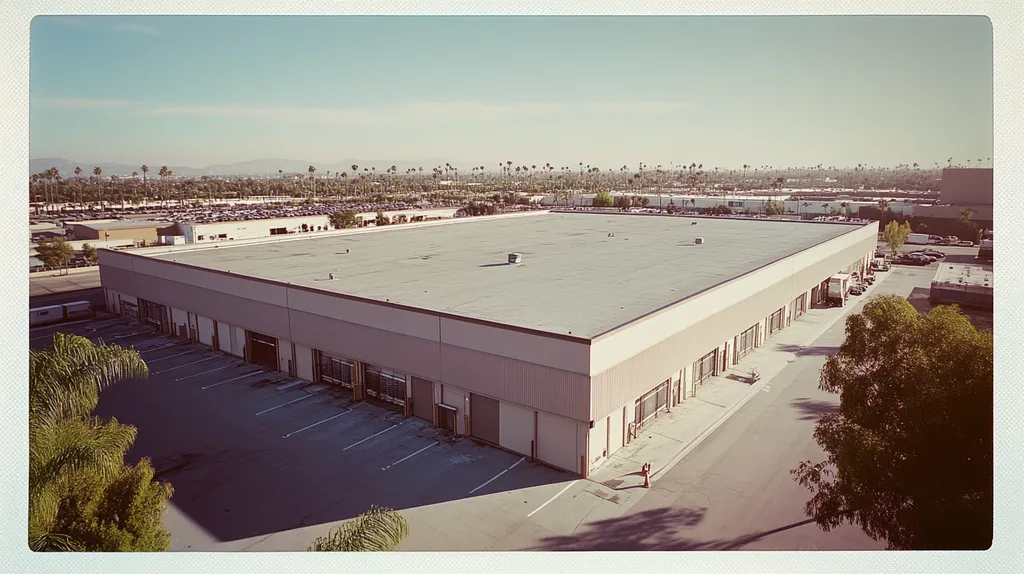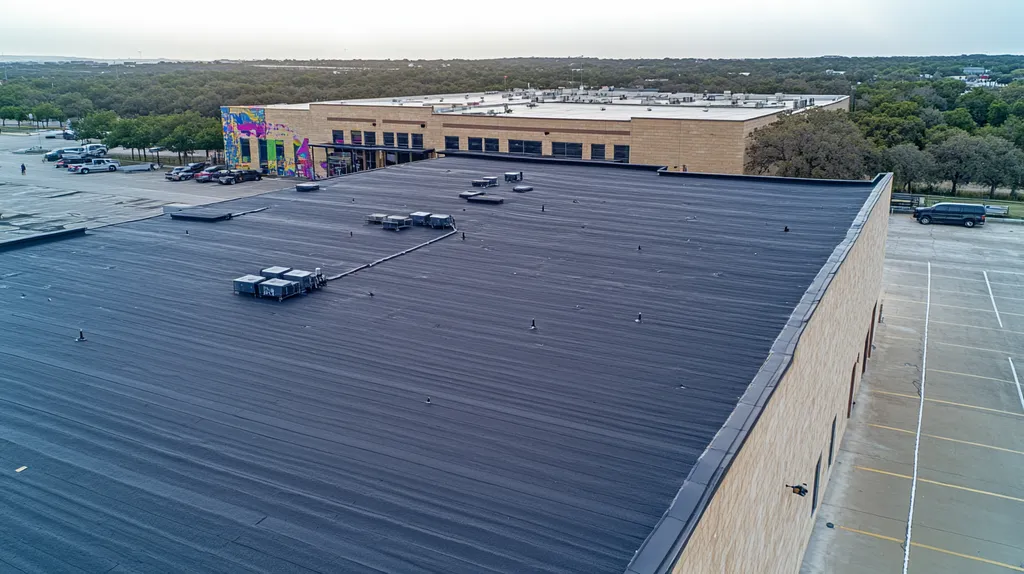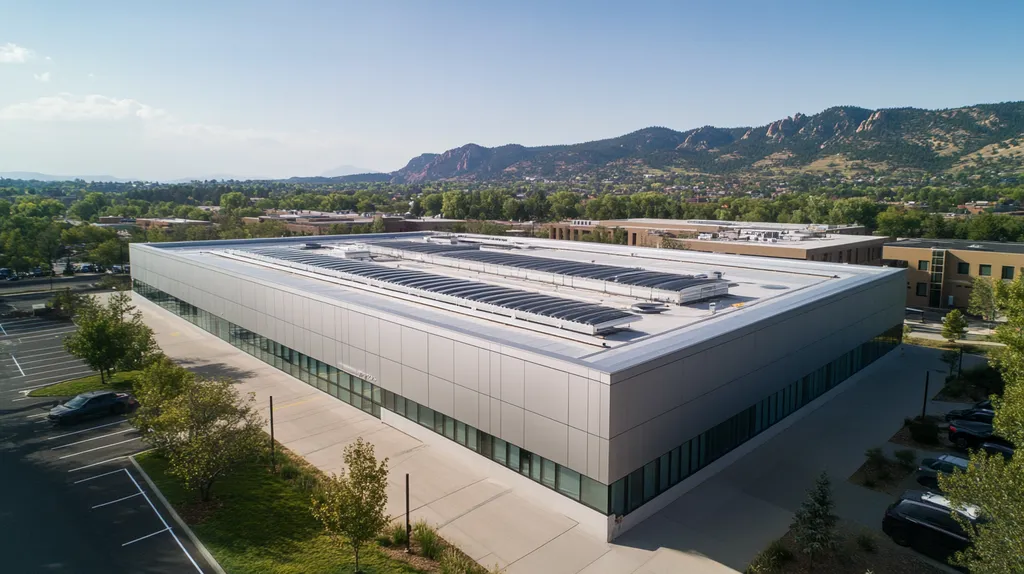With commercial energy costs rising 12% annually, property owners can no longer ignore the potential savings from integrated roof lighting systems. Studies show buildings waste up to 30% of their energy through inefficient lighting configurations.
Smart integration of lighting into commercial roofing structures can reduce energy consumption by 40% while extending roof lifespans. However, achieving these benefits requires careful attention to performance factors, financial considerations, and compliance requirements.
This comprehensive guide provides property managers with actionable strategies for evaluating, implementing, and maintaining integrated lighting solutions that enhance roof efficiency and boost bottom-line results.
SECTION 1: PERFORMANCE FACTORS
Energy efficiency is more critical than ever, and integrating lighting into commercial roofing systems presents a valuable opportunity for improvement. Buildings that harness natural light effectively can see energy consumption drop by as much as 40%. Understanding the effects of integrated lighting on thermal performance and energy savings is essential for property owners and facility managers. This section explores these aspects, along with material compatibility, to highlight the concrete benefits of integrated lighting systems.
Assessing Lighting Integration Impact on Roof Thermal Performance
The inclusion of lighting systems can significantly influence the thermal performance of a roof. Smart lighting designs help minimize the heat absorbed by roofing materials, which is especially beneficial in hotter climates. Reflective membrane materials, for instance, can work alongside integrated lighting to reduce roof temperatures and boost energy efficiency.
Incorporating daylighting features, like skylights, decreases dependence on artificial lighting. This reduces energy costs and enhances occupant comfort and productivity. By balancing natural and artificial light, roofs can maintain ideal thermal conditions, particularly in industrial facilities where temperature stability is crucial for machinery performance.
Conducting a thermal performance assessment is essential for understanding how energy flows through the roof with the new lighting installed. This analysis can uncover hotspots that may impact the lifespan of roofing materials. Utilizing advanced technologies, like sensors, can dynamically adjust lighting based on roof temperature, further improving thermal performance.
Key Action Items
Evaluating Energy Efficiency Gains from Integrated Lighting Systems
The energy efficiency benefits of integrated lighting systems are substantial and multifaceted. By adopting LED lighting and smart control technology, buildings can see significant reductions in energy consumption. Research shows that switching from traditional lighting to LEDs can result in as much as 75% savings on electricity costs.
Facility managers should also think about the long-term savings related to operational expenses. Integrated systems lower overall energy usage, translating into reduced utility bills year after year. For many facilities, this means a rapid return on investment, often within three years.
Furthermore, well-designed integrated lighting can enhance occupant comfort and productivity in commercial settings. Improved lighting leads to better worker morale and efficiency, thus indirectly boosting overall business performance. This highlights the compelling reasons to invest in advanced lighting solutions.
Key Action Items
Verifying Roof Material Compatibility with Lighting Installation
Material compatibility is crucial when integrating lighting systems into commercial roofs. Property owners must ensure that roofing materials can support modifications for lighting fixtures. Some materials may not withstand additional penetrations, increasing the risk of leaks or compromising structural integrity.
For instance, common roofing materials like thermoplastic polyolefin (TPO) and ethylene propylene diene monomer (EPDM) have distinct characteristics and require specific installation methods. Selecting appropriate materials that enable integrated lighting while maintaining the roof’s integrity is vital for longevity.
It is wise to consult roofing professionals to confirm material compatibility before installation begins. This proactive measure helps avoid costly errors and ensures a seamless integration. Adhering to manufacturer specifications during modifications also protects the roof warranty.
Key Action Items
SECTION 2: FINANCIAL CONSIDERATIONS
Integrating lighting into commercial roofs is more than just a design choice; it has significant financial implications. With a substantial part of budgets dedicated to operational costs, any strategy that improves efficiency warrants close scrutiny. By investing in integrated lighting, property owners can potentially reduce energy costs, streamline operations, and even increase property value. This section delves into key financial considerations, including a cost-benefit analysis, return on investment, and budgeting for installation and maintenance.
Cost-Benefit Analysis of Integrated Lighting for Commercial Roofs
A robust cost-benefit analysis is vital when considering integrated lighting for commercial roofs. Property owners need to balance the upfront installation costs with the long-term benefits gained from energy efficiency. Current energy prices underscore the financial burdens traditional roofing configurations create, making upgrades an increasingly attractive option.
For example, integrated LED lighting can significantly cut electricity usage compared to older bulb technologies. By analyzing energy consumption data, facility managers can project potential savings that help justify initial expenses. It’s also important to factor in the durability and maintenance expenses associated with these systems.
Additionally, financial incentives, such as government rebates and tax credits, can make the adoption of integrated lighting systems even more appealing. These benefits can reduce initial costs, making the investment more feasible for property owners.
Key Action Items
Estimating Long-Term Energy Savings and ROI
Projecting long-term energy savings requires more than basic calculations; it entails forecasting an overall return on investment (ROI). Integrated lighting not only improves energy efficiency but also enhances operational productivity. Consequently, reduced energy consumption translates into notable savings over time.
Facility managers should evaluate the longevity of integrated lighting systems, as LED options frequently outlast traditional fixtures, leading to reduced replacement needs and lower associated labor costs. This extendable lifespan significantly contributes to a favorable ROI by ensuring reliable performance with less frequent upkeep.
Research indicates businesses can save over 30% on lighting costs alone through LED implementations. When enhanced employee productivity in well-lit spaces is factored in, the financial case for integrated lighting strengthens considerably.
Key Action Items
Budgeting for Installation and Maintenance of Roof Lighting
Effective budgeting for the installation and ongoing maintenance of integrated lighting is key to a successful project. While the initial investment might seem substantial, understanding budgeting strategies can ease the process. Property owners need to account for materials, labor, and potential downtime during installation.
Establishing a comprehensive installation budget involves considering the expected lifespan and maintenance routines for lighting systems. Regular inspections and minor repairs can prolong the life of these systems, thereby minimizing costs over time.
Facility managers should also investigate financing options. Utilizing energy-efficient program incentives or financing plans can help maintain cash flow while ensuring the budget remains aligned with project goals.
Lastly, continuous maintenance costs must be factored into ongoing budgets. A well-planned budget will empower property owners to make informed decisions about integrated lighting and optimize their financial outcomes.
Key Action Items
SECTION 3: COMPLIANCE REQUIREMENTS
Integrating lighting systems into commercial roofing is a significant upgrade that comes with important compliance requirements. Currently, over 60% of commercial buildings do not meet modern energy codes, resulting in costly fines and operational inefficiencies. Property owners and facility managers must understand these regulations to avoid financial penalties and safety hazards. This section outlines the crucial compliance elements, including building codes, energy regulations, and safety standards.
Navigating Building Codes for Roof-Integrated Lighting Systems
Building codes establish the essential safety and structural guidelines for roofing and lighting systems. Compliance can differ significantly across regions, making early consultations with local authorities essential. Many areas enforce specific requirements for materials and installation techniques that can accommodate integrated lighting.
For example, certain codes may restrict roof load capacities, influencing fixture selection. Additionally, rooftop access for maintenance might introduce further safety considerations. Ignoring these codes can lead to project delays and costly revisions.
Being proactive about these requirements not only ensures adherence but can also streamline the design process. Using lightweight materials, for instance, can minimize structural strain while still facilitating effective lighting integration.
Key Action Items
Ensuring Energy Code Compliance with Lighting and Roofing
Energy codes aim to enhance efficiency and reduce energy consumption across buildings. These regulations are vital for integrating lighting systems into commercial roofing. Many energy codes mandate specific efficiency ratings for both lighting fixtures and roofing materials.
For instance, the International Energy Conservation Code (IECC) often requires that installed fixtures meet high efficiency standards, frequently prompting the use of LEDs. This necessity not only assures compliance but also promotes long-term energy savings.
It’s essential to consider the insulation properties of the roof as well. Inadequate insulation can squander energy, counteracting the gains from improved lighting. Conducting energy modeling can help property owners understand how integrated systems work together, ensuring compliance with energy standards.
Key Action Items
Meeting Safety and Electrical Standards for Roof Installations
Safety and electrical standards for roof installations are critical. The National Electric Code (NEC) establishes stringent guidelines for wiring and electrical components. Property owners must ensure that their integrated lighting systems comply with these standards to mitigate potential hazards.
Improper installation poses risks such as electrical shocks or fire hazards, raising liability issues for property managers. Additionally, rooftop environments may present unique challenges, like moisture or weather extremes that electrical components must withstand.
Regular inspections and maintenance of electrical systems are vital to catching potential problems before they escalate into major safety violations. Collaborating with certified electricians familiar with commercial roofing ensures compliance and safety.
Key Action Items
SECTION 4: RISK MANAGEMENT
Integrating lighting into commercial roofing systems provides remarkable advantages, but it also brings specific risks that need careful management. Ignoring these risks can lead to serious structural damage, safety hazards, and expensive repairs.
Statistics reveal that faulty lighting wiring is one of the leading causes of electrical fires in commercial buildings. This section delves into potential structural risks, electrical and fire hazards, and the importance of using weather-resistant lighting solutions.
Identifying Potential Structural Risks from Lighting Integration
Implementing integrated lighting systems can alter the load-bearing structure of commercial roofs. Additional weight from fixtures might lead to overloading, threatening the roof’s integrity. For instance, a lack of planning in retrofitting older buildings with new lighting could result in visible sagging or, worse, a roof collapse.
Property owners must undertake a comprehensive structural assessment before installation. This evaluation should include identifying existing load capacities and determining if reinforcements are necessary. Consulting with a structural engineer can provide valuable insights to mitigate any risks tied to lighting integration.
Moreover, the placement of lighting fixtures can interfere with existing roofing materials and drainage systems. Careful positioning is imperative to prevent issues like water pooling and clogged gutters, which can subsequently cause leaks. By addressing these structural concerns proactively, property owners can ensure that integrated lighting enhances roof performance rather than endangers it.
Key Action Items
Mitigating Electrical and Fire Hazards on Commercial Roofs
Electrical hazards represent a substantial risk when integrating lighting systems into commercial roofing. Faulty wiring or incorrect connections can lead to short circuits, and fire incidents account for over 40% of fires in commercial buildings, according to the National Fire Protection Association (NFPA).
To combat these risks, it is crucial to hire certified electricians experienced with commercial roofing standards. These professionals will ensure all wiring is properly insulated and weather-resistant. Utilizing outdoor-rated fixtures is also essential to fend off moisture-related electrical failures.
Installing circuit protection devices, like breakers and surge protectors, can guard against electrical surges. Ongoing inspections and maintenance of lighting systems will help catch potential issues before they escalate into dangerous situations. Prioritizing electrical safety protects not only the building but also the well-being of its occupants and staff.
Key Action Items
Planning for Weather Resistance and Durability of Lighting Components
Ensuring weather resistance is crucial for lighting components that are integrated into commercial roofing systems. Harsh weather conditions, such as heavy winds and rain, can lead to degradation of poorly designed fixtures. For example, LED lights positioned in areas prone to strong winds may become dislodged or damaged over time.
Selecting high-quality materials specifically designed for outdoor use can protect against common weather-related failures. Property owners should opt for marine-grade materials or fixtures with high IP (Ingress Protection) ratings to withstand harsh environmental conditions.
Additionally, establishing a regular inspection and maintenance schedule is critical. These checks should look for signs of wear, corrosion, and ensure all fixtures remain securely fastened. By focusing on weather resistance and durability, businesses can keep their integrated lighting solutions effective and safe for the long term.
Key Action Items
SECTION 5: OPERATIONAL PROCEDURES
Integrating lighting systems into commercial roofs can greatly enhance energy efficiency, but it also presents operational challenges. Addressing installation disruptions and establishing effective maintenance protocols is vital for harnessing the full potential of integrated lighting. This section outlines essential operational procedures to maximize functionality and energy savings.
Scheduling Installation with Minimal Roof Disruption
Careful scheduling of installation is paramount to limit disruptions during busy operational hours. Businesses may suffer slowdowns from disruptive installation processes, so it’s advisable to plan these activities during off-peak times, such as weekends or overnight shifts.
A well-structured project timeline enables stakeholders to anticipate any impacts on daily operations. Using a skilled installation team that completes work efficiently reduces risks and helps ensure projects stay on track and within budget.
Effective communication plays a significant role during the installation phase. Informing staff and clients about the timeline and any necessary changes fosters cooperation and diminishes confusion, creating a smoother installation process.
Key Action Items
Routine Inspection and Maintenance Protocols for Lighting Systems
Regular inspections and maintenance of integrated lighting systems are critical for optimal performance. Ongoing assessments can reveal wear and faults that may cause unexpected failures or increased energy usage. Assessments should include checking fixture conditions and control systems.
Property owners should implement a structured maintenance schedule, ideally on a quarterly basis. This proactive strategy allows timely repairs and increases the system’s lifespan while maximizing energy efficiency. Keeping a detailed maintenance log aids in tracking costs and performance trends.
Investing in smart lighting technologies can further streamline maintenance efforts. Many modern systems feature diagnostic capabilities that alert owners to issues before they worsen, conserving both time and resources. Facilities managers should train staff to promptly respond to these alerts.
Key Action Items
Integrating Lighting Controls for Optimal Energy Management
Effective lighting controls are essential for promoting energy management and efficiency. Automated systems such as motion sensors and timers ensure lights operate only when needed, conserving energy and extending the lifespan of lighting units.
Incorporating daylight harvesting technologies can further enhance energy usage. By adjusting lighting levels based on natural light availability, businesses can significantly cut energy costs, showcasing their commitment to sustainability while reaping immediate financial benefits.
Training employees on how to use control systems is vital to maximizing these technologies. Facility managers should ensure staff are well-versed in adjusting settings to accommodate occupancy patterns and operational needs, empowering them to actively participate in energy management.
Key Action Items
SECTION 5: OPERATIONAL PROCEDURES
Integrating lighting systems into commercial roofs is a strategic move that can significantly boost energy efficiency. However, property owners must navigate operational challenges related to installation and ongoing maintenance. Issues like ensuring minimal disruption during installation as well as establishing effective maintenance protocols are crucial for optimizing the benefits of integrated lighting. This section outlines operational procedures to maximize both functionality and energy savings.
Scheduling Installation with Minimal Roof Disruption
Proper scheduling of installation is essential to minimize disruptions during peak operational hours. Many businesses face productivity slowdowns due to interruptions caused by noisy or invasive installation processes. To mitigate this risk, property owners should strategically plan installations during off-peak times, like weekends or overnight hours.
Creating a detailed project timeline allows stakeholders to anticipate any operational impacts. Investing in skilled installation teams experienced in efficient and discreet work helps ensure projects remain on schedule and within budget, reducing risks of disruption.
Effective communication is critical during the installation phase. Keeping all involved parties informed, including staff and clients, fosters cooperation and reduces confusion. This transparency builds trust and helps streamline the entire installation process.
Additionally, consider implementing a phased approach to installation. Breaking the project into manageable segments allows businesses to maintain ongoing operations while gradually enjoying the benefits of the new lighting system.
Key Action Items
Routine Inspection and Maintenance Protocols for Lighting Systems
Regular inspection and maintenance of integrated lighting systems are vital for sustained performance. Ongoing assessments can identify wear or faults that could lead to unexpected failures or increased energy consumption. Routine check-ups should include verifying the condition of fixtures and ensuring control systems operate efficiently.
Establishing a structured maintenance schedule, ideally quarterly, allows for timely repairs and extends the lifespan of lighting systems while maximizing energy efficiency. Keeping a maintenance log is essential for tracking costs and performance trends over time.
Investing in smart lighting technologies can simplify maintenance. Many modern systems include diagnostic features that alert property owners to issues before they escalate, saving both time and resources. Facilities managers should ensure staff are trained to respond promptly to these alerts.
Collaborating with a specialized maintenance team enhances inspection effectiveness. These professionals can identify potential upgrades or adjustments, further improving overall system performance.
Key Action Items
Integrating Lighting Controls for Optimal Energy Management
Effective lighting controls are crucial for optimizing energy management and efficiency. Automated systems such as motion sensors and timers ensure lights operate only when needed, conserving energy and extending the lifespan of lighting units.
Incorporating daylight harvesting technologies can further enhance energy usage. By adjusting artificial lighting based on the availability of natural light, businesses can significantly cut energy costs and showcase their commitment to sustainability.
Training staff on operating control systems is essential for maximizing these technologies. Facility managers should ensure employees understand how to adjust settings for occupancy patterns and operational needs, empowering them to actively engage in energy management.
Finally, data monitoring tools provide actionable insights into energy usage trends. These systems enable property owners to analyze performance data, pinpoint inefficiencies, and make informed adjustments to their lighting strategies.
Key Action Items
The Bottom Line
With energy costs rising 12% annually and 60% of commercial buildings failing to meet modern efficiency standards, integrated roof lighting represents a critical opportunity that property owners cannot afford to ignore.
Studies demonstrate that properly implemented integrated lighting systems can reduce total building energy consumption by up to 40% while extending roof lifespans by 15-20 years.
Success requires careful attention to performance factors, financial considerations, compliance requirements, and risk management protocols outlined in this guide.
As regulatory pressures increase and energy costs continue to climb, those who fail to optimize their roofing systems with integrated lighting solutions risk falling behind more efficient competitors.
The time to act is now – before rising costs and stricter regulations force reactive rather than strategic implementation.
FREQUENTLY ASKED QUESTIONS
Q. How does integrated lighting improve performance of a commercial roof?
A. Integrated lighting enhances a roof’s thermal performance by minimizing heat absorption and increasing energy efficiency. Using reflective materials with smart lighting designs helps to maintain comfortable temperatures, extending the roof’s lifespan.
Q. What are the financial benefits of integrated lighting for an industrial roof?
A. Integrated lighting can significantly reduce energy costs and streamline operations, leading to long-term savings. This enhancement not only decreases utility expenses but may also increase property value over time.
Q. What compliance requirements must I consider for a commercial roof?
A. It is crucial to adhere to building codes, energy regulations, and safety standards. Understanding local compliance requirements will help avoid fines and ensure the effective integration of lighting systems into your roof.
Q. How can I manage risks when integrating lighting into my commercial roof?
A. Conduct a thorough structural assessment and engage certified electricians for proper installation to mitigate risks. Regular inspections and the use of weather-resistant materials also help avoid potential hazards.
Q. What operational challenges should I expect with roof lighting integration?
A. Common challenges include minimizing installation disruptions and establishing effective maintenance protocols. Planning installations during off-peak hours and implementing regular inspection schedules can optimize energy savings and functionality.
Q. How do I ensure maintenance of integrated lighting systems for a commercial roof?
A. Schedule regular inspections, typically quarterly, to assess fixture conditions and maintain optimal performance. Keeping detailed maintenance logs aids in tracking costs and ensuring longevity of the lighting systems.
Q. What are the best practices for optimizing energy management in roof lighting?
A. Implement automated controls like motion sensors and daylight harvesting to optimize energy usage. Regular training and monitoring of energy data empower staff to adjust settings based on operational needs.











